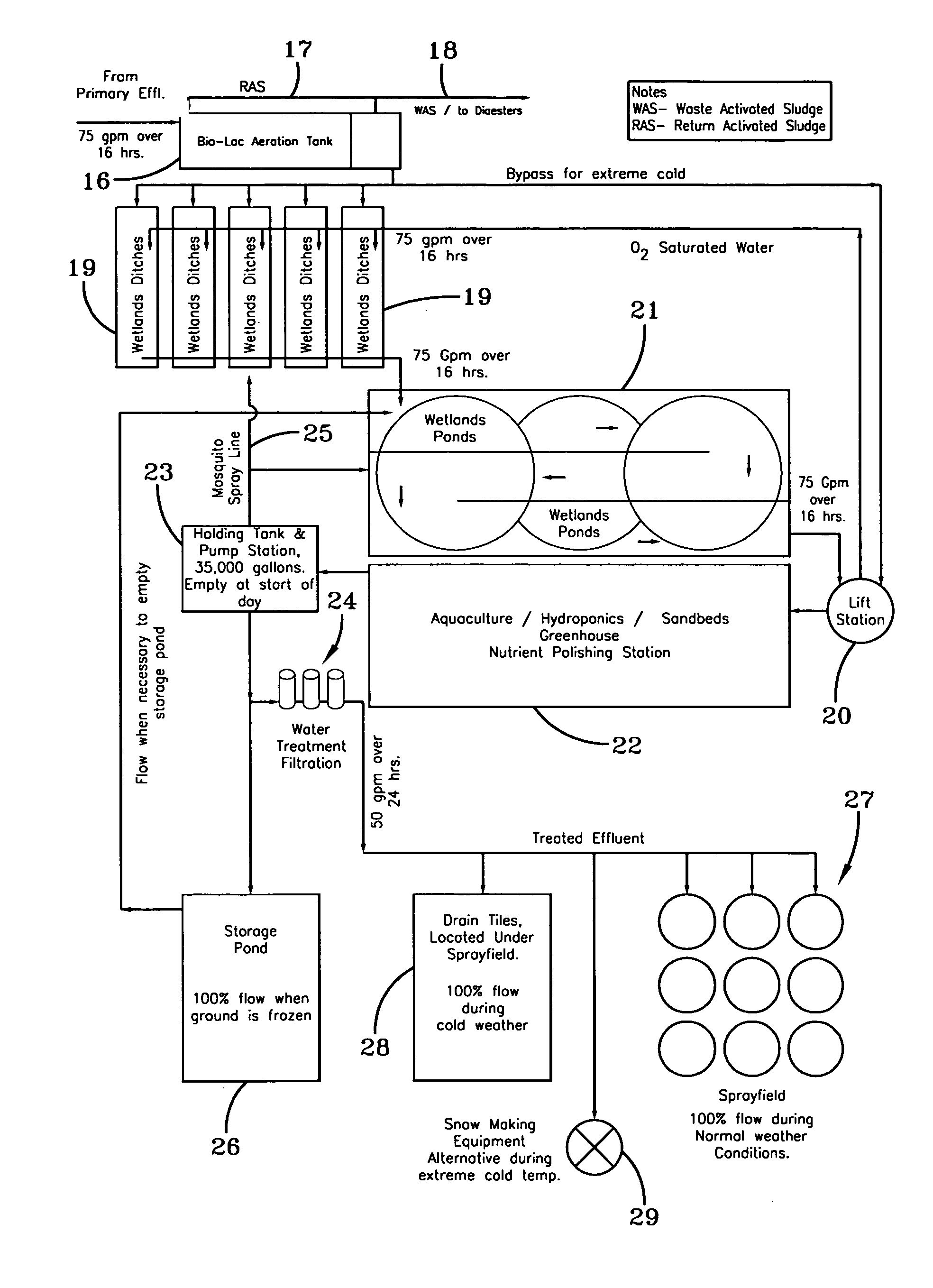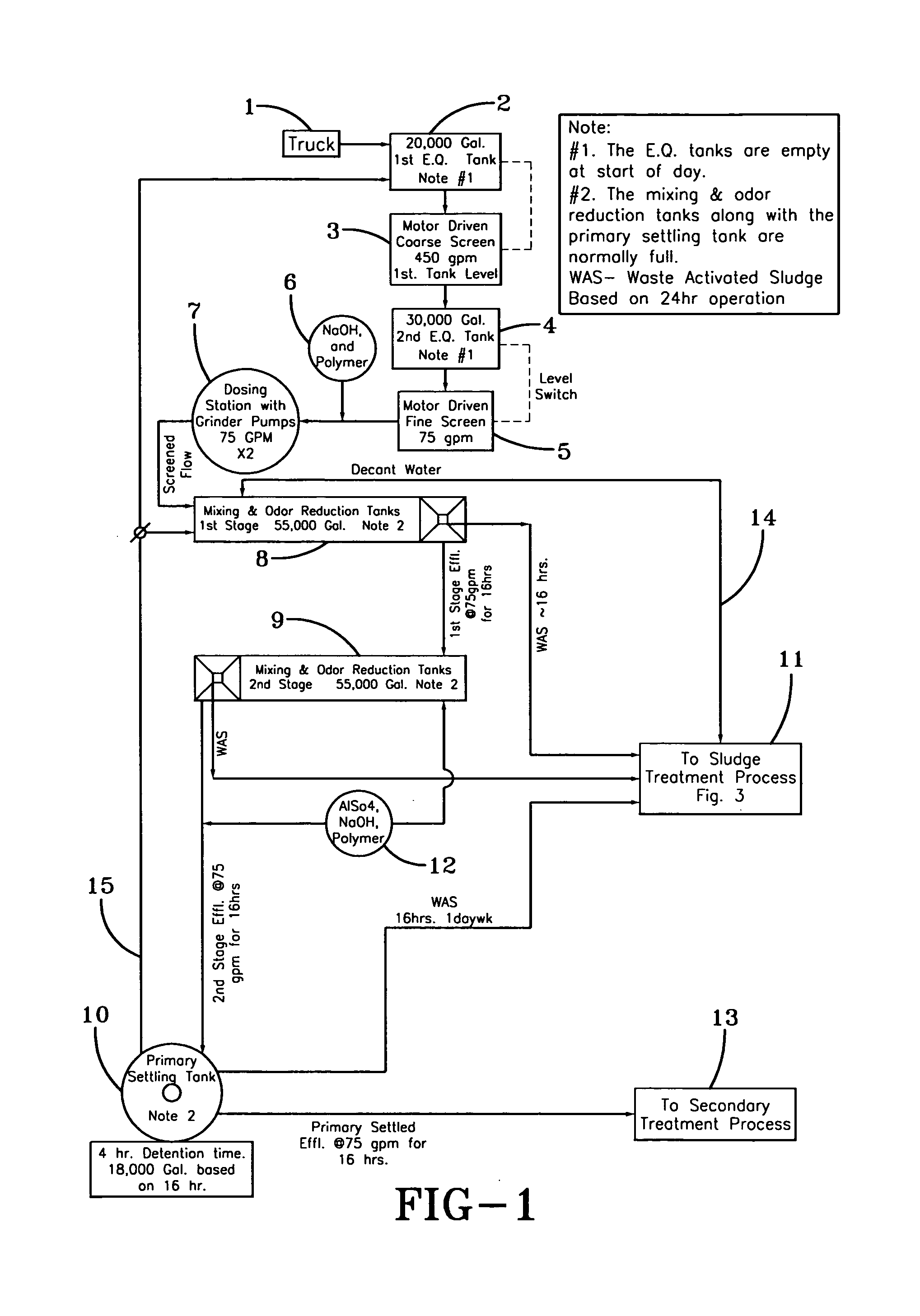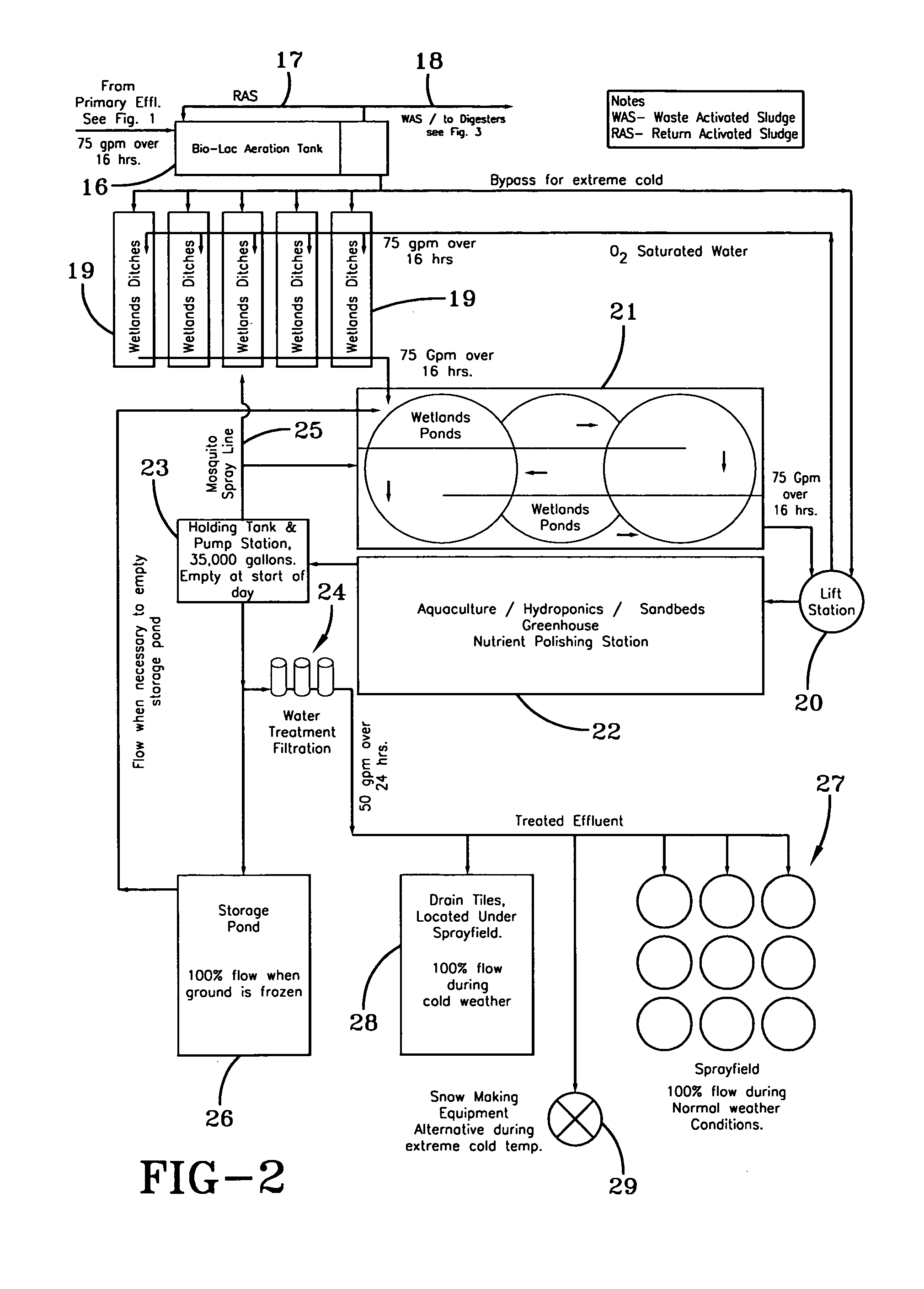Septage treatment system and method of treating septage
a septage treatment and treatment system technology, applied in the field of systems and methods for the treatment of septage, can solve the problems of shortening the useful life of the plant, contaminating the ground water, and direct application of raw septage waste to farmlands,
- Summary
- Abstract
- Description
- Claims
- Application Information
AI Technical Summary
Benefits of technology
Problems solved by technology
Method used
Image
Examples
Embodiment Construction
[0065]In accordance with the foregoing summary, the following provides a detailed description of the preferred embodiment, which is presently considered to be the best mode thereof.
[0066]The preferred system herein described is not intended to be exhaustive or to limit the invention to the precise forms disclosed. They are chosen and described to explain the principles of the invention and the application of the method to practical uses so that others skilled in the art may practice the invention. For instance, it will be readily apparent to one of ordinary skill that variations in the disclosed parameters and arrangements may be made to suit individual sites and for purposes of scaling the system for a given application. In addition, the process parameters may be varied depending upon the nature of the waste and the desired time and volume treatment desired in order to adapt the system and methods to a given application, without undue experimentation.
[0067]The following describes a...
PUM
| Property | Measurement | Unit |
|---|---|---|
| Ratio | aaaaa | aaaaa |
| Residence time | aaaaa | aaaaa |
Abstract
Description
Claims
Application Information
 Login to View More
Login to View More - R&D
- Intellectual Property
- Life Sciences
- Materials
- Tech Scout
- Unparalleled Data Quality
- Higher Quality Content
- 60% Fewer Hallucinations
Browse by: Latest US Patents, China's latest patents, Technical Efficacy Thesaurus, Application Domain, Technology Topic, Popular Technical Reports.
© 2025 PatSnap. All rights reserved.Legal|Privacy policy|Modern Slavery Act Transparency Statement|Sitemap|About US| Contact US: help@patsnap.com



